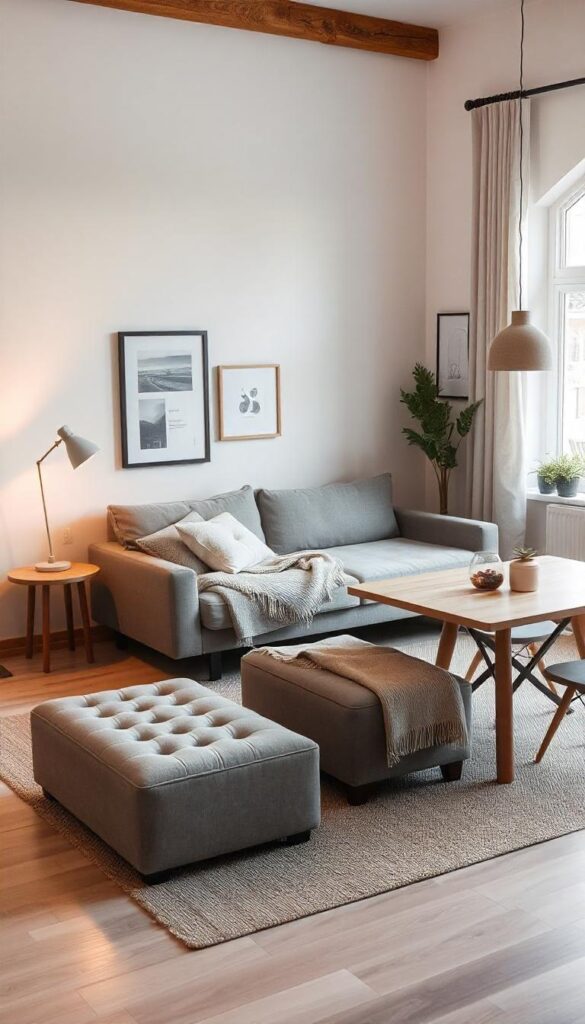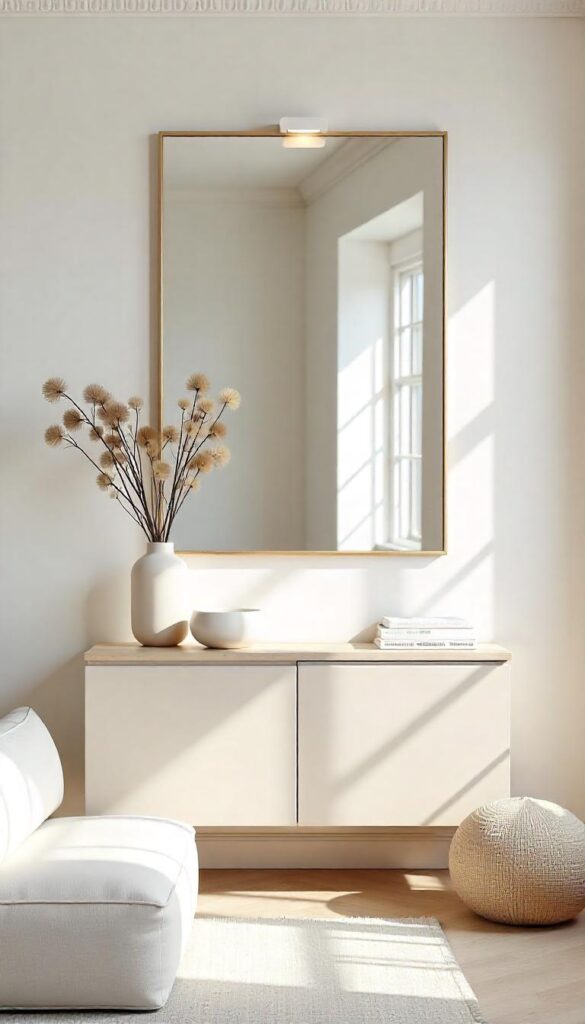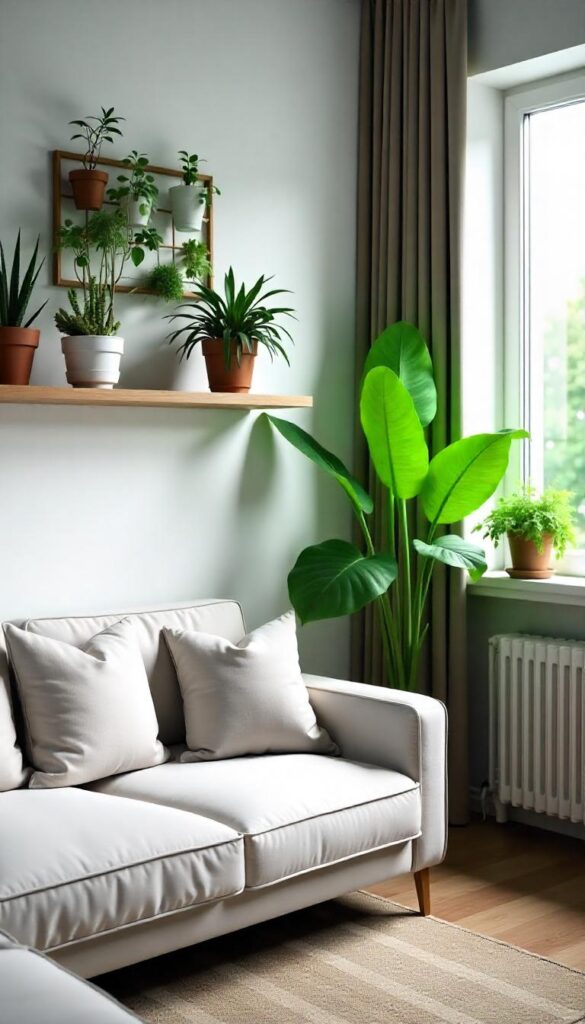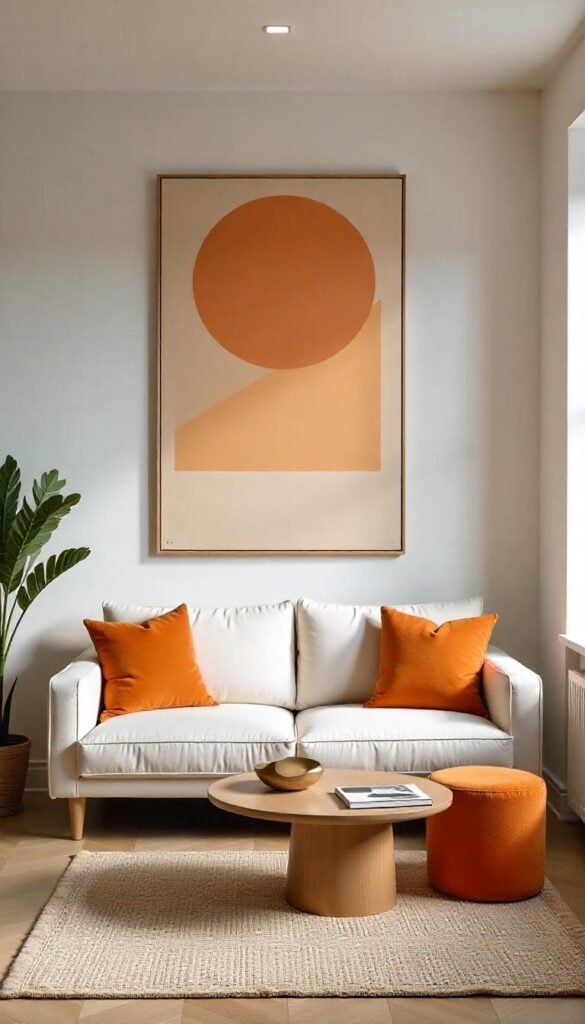A small living room doesn’t mean limited style or comfort. With thoughtful design, every inch can be functional and beautiful. Whether you love cozy vibes or sleek minimalism, there are plenty of ways to transform a compact space into something truly special. Below are practical ideas to make the most of your living room.
Opt for Multi-Functional Furniture
Small spaces thrive on versatility. A storage ottoman can act as a coffee table, extra seating, or a place to tuck away blankets. Sofa beds or futons transform a living room into a guest area in seconds. Extendable dining tables allow for larger gatherings while remaining compact when not in use. Choosing furniture that serves multiple purposes ensures every piece contributes to both function and style.

Use Light Colors to Expand the Space
Light shades make a room feel open and spacious. Opt for soft neutrals like beige, pale blue, or light gray to maximize brightness. Paint the ceiling white to give the illusion of higher ceilings. Add personality with a few colorful accessories, like cushions or small artwork, but avoid overwhelming the room with bold tones.
Mount Shelves for Vertical Storage
Vertical storage frees up floor space while providing ample room for your belongings. Use floating shelves to display books, family photos, or a few decorative items. Choose shelves that match the wall color for a seamless look, or opt for contrasting tones to make them stand out. For small living rooms, every inch of wall space counts.
Maximize Natural Light
Natural light instantly makes a space feel larger and more inviting. Opt for light, sheer curtains or blinds that allow sunlight to pour in without sacrificing privacy. Arrange furniture to avoid blocking windows. If your space lacks sufficient light, strategically place mirrors near windows to amplify brightness.
Choose Compact Furniture
Choose slim, space-saving furniture designed for small rooms. A loveseat or a petite sectional can offer the same comfort as larger pieces but fits snugly in tight spaces. Look for narrow armrests and low backs to avoid visual bulk. Avoid overly ornate designs that can make the room feel crowded.
Mirror Magic
Mirrors are powerful tools for making small rooms feel bigger. A large, frameless mirror can create the illusion of an extra window, reflecting light and opening up the space. Alternatively, hang several smaller mirrors in an artistic arrangement to achieve the same effect with added style.

Create Zones with Rugs
Use area rugs to define different parts of your living room. For instance, a small rug can ground the seating area, while another can mark off a workspace. Choose patterns that align with your overall theme but avoid overwhelming designs. Rugs also add warmth and softness to the room.
Go Vertical with Art
Tall, vertical artwork can create a sense of height, especially in small rooms. Group smaller pieces together in a gallery wall to make a bold statement. Use thin, lightweight frames to avoid making the space feel cluttered. A single oversized canvas can also act as a focal point without taking up much space.
Invest in Built-Ins
Built-in shelves or cabinets are perfect for small spaces. They make use of awkward corners and eliminate the need for bulky furniture. You can customize them to fit your needs, whether for books, electronics, or decorative items. Paint them the same color as your walls for a seamless, integrated look.
Foldable and Stackable Options
Space-saving furniture like foldable chairs and stackable stools is ideal for small homes. A drop-leaf table can expand for meals and fold down afterward. These items are easy to store and bring out only when needed, keeping your room open and uncluttered.
Add Greenery
Plants breathe life into any living room. Opt for small, low-maintenance varieties like succulents or ferns. Wall-mounted planters save floor space while adding a fresh, green touch. Use planters with neutral tones or subtle patterns to keep the room cohesive.

Use Transparent or Acrylic Furniture
Furniture made of glass or acrylic appears almost invisible, creating an open and airy feel. Clear coffee tables or chairs blend effortlessly into the room, allowing other elements to stand out. Pair them with soft, neutral tones for a balanced, modern look.
Embrace Minimalism
Less is more in small spaces. Limit furniture and decor to essentials. Focus on clean lines and uncluttered surfaces. Highlight a few quality pieces, like a unique chair or a stylish lamp, instead of crowding the room with many smaller items.
Choose Furniture with Legs
Furniture with exposed legs creates a sense of openness. Sofas, chairs, and tables raised off the floor allow light to pass underneath, making the room feel less cramped. Wooden or metallic legs add an elegant touch while enhancing the overall aesthetic.
Install Sconces
Wall-mounted lighting frees up floor and table space while providing ambient light. Sconces come in various styles to match your decor, from industrial designs to minimalist options. Position them near seating areas or artwork for added functionality and charm.
Play with Scale
Don’t shy away from larger statement pieces, even in small rooms. A big wall clock or a single oversized painting can anchor the space. Pair these with smaller, understated furniture to maintain balance and avoid overcrowding.

Keep Cords Hidden
Visible cables can make even the tidiest room look chaotic. Use cord organizers or furniture with built-in cable management to keep everything neat. Hide routers and extension cords in decorative boxes for a cleaner look.
Sliding Doors Save Space
Sliding doors, whether for entryways or built-in cabinets, save precious square footage. They glide open without taking up additional room and give a sleek, modern appearance. Frosted glass doors also allow light to pass through while maintaining privacy.
Add Personality with Textures
Incorporate a mix of textures to bring depth and interest to your room. Pair smooth surfaces like glass tables with soft, plush cushions or knotted throws. Textures add warmth and dimension without taking up extra space.
Go for a Monochrome Palette
Stick to a single color family to create a cohesive look. Use varying shades and textures of the same hue to add depth. Monochrome palettes give the room a calm, unified feel while making it appear larger and more organized.
Use Small-Scale Patterns
Large patterns can overwhelm small rooms. Instead, opt for subtle designs like pinstripes, polka dots, or small florals. These add charm without dominating the space, especially on cushions, curtains, or rugs.
Wall-Mounted TV
Wall-mounting your TV eliminates the need for a bulky media console. Choose a sleek, adjustable mount to position the screen perfectly. Keep the surrounding area minimal to emphasize the clean look.
Storage Benches or Window Seats
Combine storage and seating with multi-purpose furniture. A bench with hidden compartments stores blankets, books, or games. Window seats add charm while providing an extra spot to relax or store items discreetly.
Create a Focal Point
Draw attention to a standout element, like a stylish armchair or an eye-catching light fixture. Focal points add personality and reduce the need for excessive decor. Keep surrounding items simple to let the focal point shine.
Smart choices make small living rooms feel bigger and more functional. By combining clever storage, the right furniture, and thoughtful decor, even the smallest spaces can be transformed into something stylish and welcoming. A little creativity goes a long way in making every inch count.

